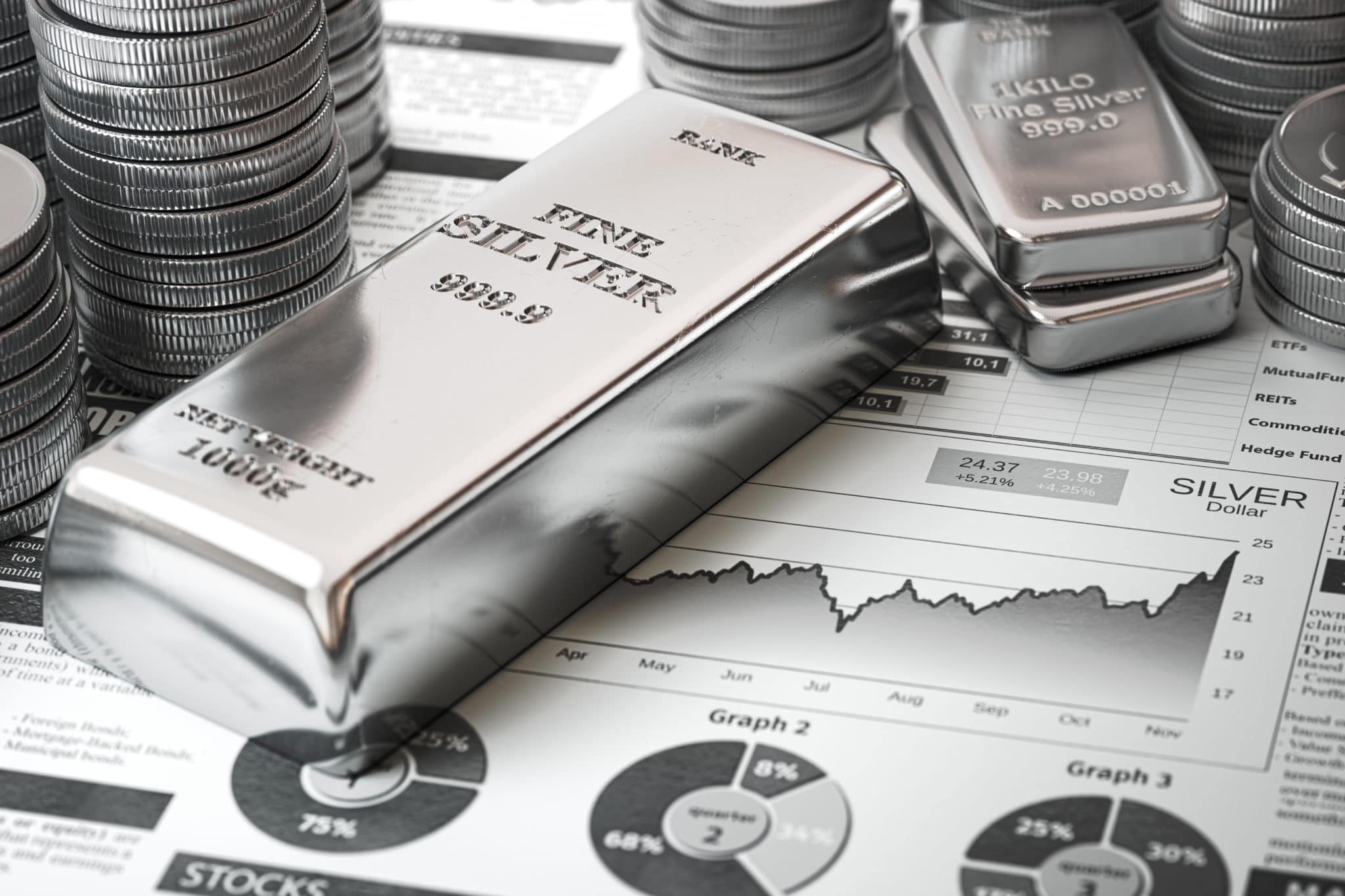
If you’re looking to expand your portfolio, precious metals, like silver, can be an excellent investment. Silver, like gold and other precious metals, can be a ‘safe-haven asset,’ meaning its value can remain steady or even increase during times of economic downturn. It’s one of those assets that savvy investors include in their portfolios as added protection for their nest egg.
Silver As An Investment
Silver has intrinsic value as an industrial, as well as a precious metal. As an investment, it’s an inert commodity, meaning it won’t provide a steady cash flow or generate a type of service or product. Like any other commodity, silver’s price is driven by the law of supply and demand, and speculation.
It may not be ‘blue-chip,’ like gold, but its value to investors as a long-term investment and as a portfolio diversifier is well-established. From 2015 to 2020, silver increased its value by more than 60%. Since 2001, through all the economic slumps, silver has managed to hold its own and even rose by 388%.
How To Invest In Silver
There are many ways to invest in silver. You can invest through silver stocks, funds, silver streaming companies, and mining stocks. The most direct way of investing in silver, however, is by buying silver bullion.
Below are different ways of investing in silver:
- Silver Bullion
Purchasing silver bullion would mean you’d be able to hold this shiny metal. The most convenient way of physically owning silver is by buying silver coins. There are pure silver coins you can purchase, like American Silver Eagles, America the Beautiful Coins, Canadian Silver Coins, and others. You can buy them online; Gainesville Coins is a trusted online provider of silver coins.
However, don’t confuse silver coins with numismatic silver coins. They’re an entirely different commodity. Numismatic coins, or collector coins, are valued by how rare they are. Silver bullion coins, on the other hand, are valued through the price of the silver itself.
There are American silver coins, for instance, that date back from the 19th century that are valued at more than a thousand dollars. Such a price is several degrees higher than the silver that are in them. With the said price, that kind of investment is similar to investing in artworks, and not in precious metals, like silver.
The value of numismatic coins can also vary greatly, and dealers don’t always agree on a particular coin’s value.
- Silver Stocks, Shares, And Other Paper Assets
There are other options of investing in silver if directly owning silver bullion isn’t your cup of tea. You can own silver by proxy by investing in companies that mine silver, for example. While it’s not the same as owning actual silver, you’d be a participant in the industry that produces this metal.
Silver mutual funds, for example, hold stocks in companies like those. The prices of these stocks match up to the prices of the actual silver. Many stockbrokers offer silver mutual funds to investors.
With ETFs or silver-exchange-traded funds, you can own actual silver bullion, and not just stocks in a company that deals in silver. However, you’d own the bullion through a fund. ETFs actually hold different kinds of assets related to silver, and not just bullion. Thus, an ETF can hold silver bullion and stocks in silver companies. And, like silver stocks, these funds are also parallel with the price of silver in the market.
- Silver Mining Stocks
You could also invest directly in silver mining companies. But, instead of buying a stock portfolio via a mutual fund, you could buy individual stocks in such companies. Keep in mind, however, that although these stocks may reflect the price of silver in the market and can sometimes surpass it, there’s still an element of risk involved—like any other investment. Silver mine stocks are, however, closer to speculation than an investment.
Stock market prices are affected by a great many things. Environmental catastrophes, government regulation or nationalization, labor unrest, political turmoil, and currency fluctuations can make stock market prices unstable. Mining companies are especially vulnerable to these events.
Moreover, they’re also susceptible to industry-specific risks, like environmental issues, mine exhaustion, high capital costs, and unproductive mines.
- Silver Streaming Companies
Silver streaming companies aren’t directly involved in mining the precious metal. What they do instead is fund companies that are involved in mining silver. In turn, mining companies sell them silver at below the market rate. The streaming company would then sell the silver at market price, thus earning them a tidy profit.
Conclusion
There are many ways to invest in silver. You can own silver bullion if that’s your thing, or you can own them by proxy through stocks and other paper assets. The best investment for you would depend on your needs. If you want a quick return, mining stocks, although speculative and, therefore, riskier (but with greater reward), is for you.
On the other hand, stocks in streaming companies are more stable and can give steady income. Mining companies often don’t pay dividends, but streaming companies do. However you want to invest, it’s important that you do your due diligence. Remember that the prices of silver can sometimes be volatile compared to other safe-haven assets. That being said, silver is a great portfolio diversifier and a solid long-term investment.


































